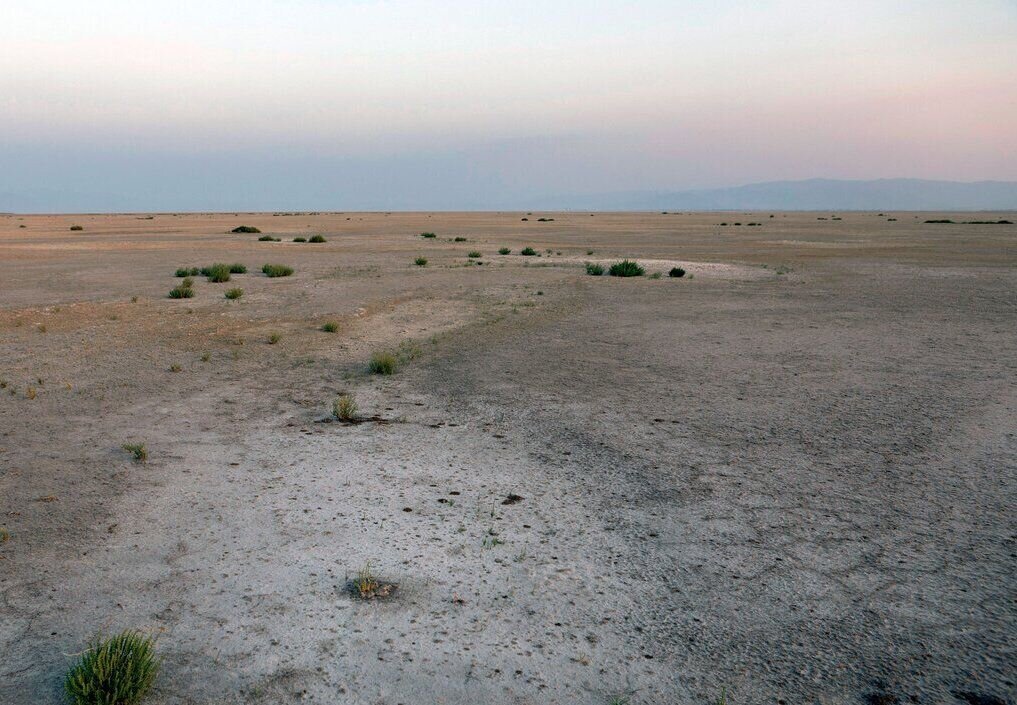Iran to celebrate World Soil Day

TEHRAN – The Ministry of Agriculture and the Department of Environment will celebrate World Soil Day (WSD) on December 5 to promote the importance of protecting soil and water as a source of food security and society’s health.
The day will be observed by holding different programs such as art competitions, photography, 100-second short films, drawing and painting, essays (for children aged 13-17), and handicrafts.
WSD is held annually as a means to focus attention on the importance of healthy soil and to advocate for the sustainable management of soil resources.
This year WSD is celebrated under the theme of "Soil and Water, a source of life".
WSD 2023 and its campaign aim to raise awareness of the importance and relationship between soil and water in achieving sustainable and resilient agrifood systems.
It is a unique global platform that not only celebrates soils but also empowers and engages citizens around the world to improve soil health.
In fact, protecting the 2 precious and vital reserves of the nations, namely "water and soil" and avoiding wasting them are among the most important tasks in protecting the environment.
Among the key messages of this day is that soil and water are essential resources for sustaining life on Earth. Soil and water are interconnected resources that need integrated management.
Implementing sustainable soil management practices enhances water availability for agriculture.
Healthy soils, enriched with organic matter, play a crucial role in regulating water retention and availability.
Efficient use of quality water, promoting the sustainable use of fertilizers and pesticides, employing appropriate irrigation methods, improving drainage systems, controlling pumping, and monitoring soil and groundwater salinity levels are essential to maintaining sustainable agricultural practices.
Improper soil and water management practices affect soil erosion, soil biodiversity, soil fertility, water quality, and quantity, while soil and water protection help climate change adaptation and lowers its effects.
Water scarcity leads to the loss of soil biodiversity while leaching and eutrophication from agriculture practices lead to the loss of biodiversity in water bodies.
The mismanagement of pesticides and fertilizers not only threatens soil and water quality but also poses significant risks to human health and ecosystems.
Poor irrigation and drainage practices are some of the main drivers of soil salinization.
Rising sea levels contribute to land loss, increasing the risk of soil salinization and sodification, which can negatively impact agricultural productivity.
Soil and water provide the foundation for food production ecosystem services and human well-being; by recognizing their invaluable role, we can take proactive measures to protect these resources for future generations.
Rainfed agriculture systems account for 80 percent of croplands, contributing to 60 percent of global food production. These systems rely heavily on effective soil moisture management practices.
Soil ecosystem services include providing food, fiber, fuel, supporting cultural heritage, construction materials, medicinal and genetic supplies, habitat for living organisms, nutrient cycle, flood regulation, climate regulation, carbon sequestration and water purification, and soil pollutants reduction.
Healthy soils act as a carbon sink, by sequestering carbon from the atmosphere, thus contributing to both climate change adaptation and mitigation efforts.
By 2050, the world's population will reach more than 9 billion which is 2 billion more than the current population of the world. In this case, food production needs to be increased by 60 percent to respond to the population's nutrient demands.
Integrated soil and water conservation will improve the land's capacity to withstand extreme climate events such as drought, floods, and dust and sand storms.
Integrated soil and water management methods provide essential ecosystem services, support life on earth, and increase ecosystem resilience.
Sustainable soil management practices, such as minimum tillage, crop rotation, organic matter addition, and cover cropping, improve soil health, reduce erosion and pollution, and enhance water infiltration and storage.
These practices also preserve soil biodiversity, improve fertility, and contribute to carbon sequestration, playing a crucial role in the fight against climate change.
Protecting and restoring dust centers, mulching combined with planting, using environmentally friendly polymer mulch, dredging, organizing and directing water to dust centers, irrigating, managing runoff along with planting seeds in dust zones, repairing and supplying equipment for existing sand and dust stations are among the taken measures by DOE in tackling sand and dust storms.
World Soil Day
Our planet’s survival depends on the precious link between soil and water.
However, in the face of climate change and human activity, our soils are being degraded, putting excessive pressure on our water resources.
Erosion disrupts the natural balance, reducing water infiltration and availability for all forms of life.
Hence, an international day to celebrate soil was recommended by the International Union of Soil Sciences (IUSS) in 2002.
Under the leadership of the Kingdom of Thailand and within the framework of the Global Soil Partnership, FAO has supported the formal establishment of WSD as a global awareness raising platform.
The FAO Conference unanimously endorsed World Soil Day in June 2013 and requested its official adoption at the 68th UN General Assembly.
In December 2013, the UN General Assembly responded by designating 5 December 2014 as the first official World Soil Day.
MT/MG
Leave a Comment